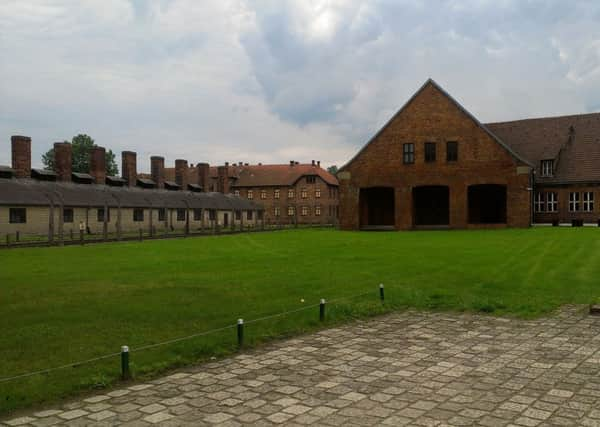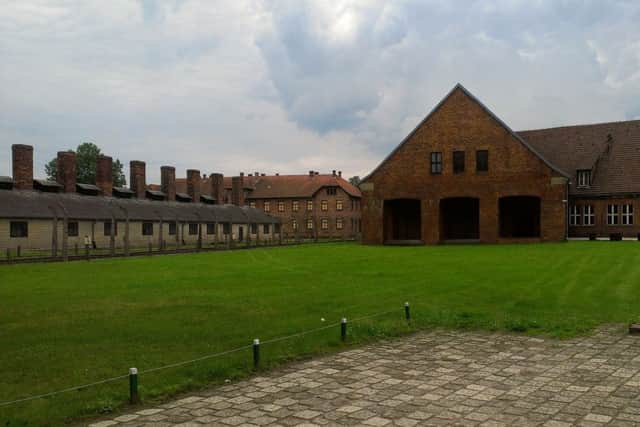My visit to Auschwitz - Part One


Beautiful.
Endless blue sky. A warm, summer breeze. Birds tweeting away in the greenest of birch trees.
I closed my eyes and for a moment I was whiling away the hours on a glorious summer’s day in the English countryside. Certainly not stood on a train track in the middle of Auschwitz II Birkenau, reluctantly harbouring thoughts of how hundreds of thousands of unsuspecting Jews reached the end of their line there. Beautiful to the naked eye, yes, but in the darkest shadow of history, as haunting and as terrifying as anywhere you are ever likely to visit.


Advertisement
Hide AdAdvertisement
Hide AdI went with the Holocaust Education Trust. The charity organises one-day visits throughout the year for groups of students and teachers. I have no lessons to take or exams to sit (fortunately) but it is easy to see how invaluable the Trust and their Lessons From Auschwitz Project is for anybody interested in educating or being educated on the Holocaust.
I’d spent hours reading books on the subject prior to my visit, hours trying to absorb the figures that accompany the endless stream of atrocities carried out in this small town on the outskirts of Krakow. Your stomach just doesn’t turn quite the same when turning the pages of a book though and nothing can prepare you for seeing first-hand a scene of unparalleled horror.
As you walk through the gateway to Auschwitz I and under the infamous sign – Arbeit Macht Frei (Work Sets You Free) – the world closes off behind you.
Auschwitz I was primarily a concentration camp, holding between 15,000 to 20,000 prisoners at any one time.
Advertisement
Hide AdAdvertisement
Hide AdMany of the barracks on site now house exhibitions featuring maps, statistics and photographs, each telling their own harrowing tale, including one corridor lined with mugshots of people killed there. Some, young boys and girls, many with shaved heads, confused looks on their faces. It will be a long time before those faces fade from my memory.
I’d heard beforehand about the displays featuring objects plundered from prisoners by Nazi soldiers. The mountains of spectacles, suitcases (because people thought they would be returning home), the piles of shoes, many from the feet of children. Heartbreaking and yet not even close to evoking the same emotions as seeing the huge glass display case overflowing with literally tonnes of human hair (cut from the prisoners as they entered the camp).
One girl left the room crying. It’s difficult to know how you should feel or even react, witnessing something like that. When I scanned the room of those remaining (part curiosity, part not wanting to continue looking at pigtails and plaits) I saw only blank, expressionless faces. When you see somebody crying you kind of feel a sense of guilt for not sharing in that reaction. The Trust educator assigned to our group told me on the way that visiting Auschwitz is a deeply personal experience, one that affects people in different ways and one that for a lot, only hits home when they return home.